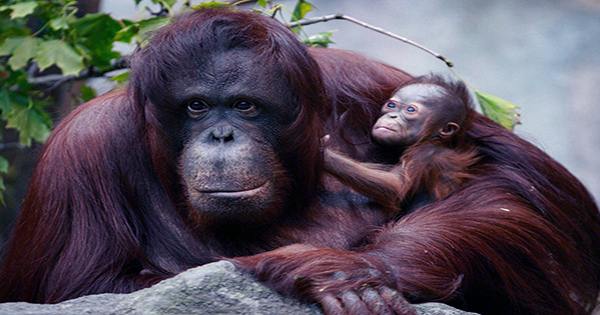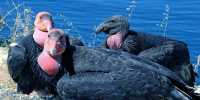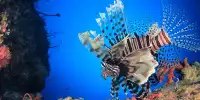You would believe orangutans are vegetarians, and you would be right for the most part, but they have been found to consume meat on occasion. A recent research reports on a Borneo orangutan (Pongo pygmaeus) that was witnessed catching, murdering, and devouring one of the world’s prettiest animals: the slow loris (with photographs and a video for your watching enjoyment). The study authors publish their observations made in 2017 at the Tuanan Orangutan Research Station in the Kapuas area of Central Kalimantan, Borneo, in the journal Primates.
The researchers were familiar with these animals’ nutrition, having observed their behavior on a regular basis from 2003 to 2017. Fruit (61%) was the most prevalent diet for the animals throughout the research period, followed by young leaves (14%), flowers (8%), and insects (5 percent). Imagine the researchers’ amazement when they saw a male orangutan called Molong eating a ham sandwich from another creature. They had not intended to monitor Molong, but rather a woman called Kerry and her 3-year-old infant Ketambe, but because he was hanging around in what referred to as “a party,” they recorded his behavior.
It is a good thing, too, since what they witnessed on that fateful day turned out to be crucial information. It all started when Molong sprang from the trees and dashed across the ground. They had presumed he was fleeing an approaching male after hearing protracted vocalizations from afar, but they quickly realized he was following a lethargic loris (Nycticebus borneanus).
Slow lorises are strictly arboreal species that like to stay in the treetops, so how did it get up on the ground? Molong continued following the loris by hopping onto branches and then back onto the ground until the animal was only a meter away, at which point he slapped it off a limb. It is probable that Molong knocked this animal out of the tree in the first place, a tactic that Sumatran orangutans have used to stun the same prey in the video below from Hardus et al., 2012.
Molong snapped the limb the loris landed on and held it out away from his body as he mounted the tree. The loris’ misery came to a gruesome conclusion when Molong bit its neck and killed it while holding it by its feet. He grabbed it with both hands and tucked it in once it was dead. Kerry approached Molong, child in tow, and looked to beg for food as the noises of Molong cronching on the hapless loris’s head caught his attention. He appeared to offer up fragments of the beheaded slow loris on occasion, only to keep them to himself. Molong, no one loves a greedy gobbling gannet.
Even for a giant orangutan, killing a loris is perilous business, since these big-eyed tree infants have a potent poison. Glands on their elbows, which they wipe on their teeth before biting prey, produce it. It is strong enough to cause anaphylactic shock in humans, so it may be quite uncomfortable for one of our relatives. This might explain why Molong handled the animal with such care till it died. Moreover, why, rather of using his hands, he employed such imaginative means to chase it, such as continually jumping into the trees and dragging the sluggish loris on a snapped-off limb.
During the research period, only two orangutans were observed consuming vertebrates: one was a hungry orangutan who raided a nest of mice like a bowl of crunchy snacks, and the other was a hungry orangutan who raided a nest of mice like a bowl of crunchy snacks.
Given the amount of time it takes to make only two observations, it appears that Bornean orangutans consume vertebrates only seldom, but it is conceivable that more regular meat intake being overlooked due to a shortage of researchers on the ground. “In conclusion, we describe the first predation and consumption event of a wild Bornean orangutan on a slow loris,” the researchers wrote, adding that while such predation events are “rare and most likely opportunistic,” long-term field research is required to witness the gruesome hunts as they unfold.















